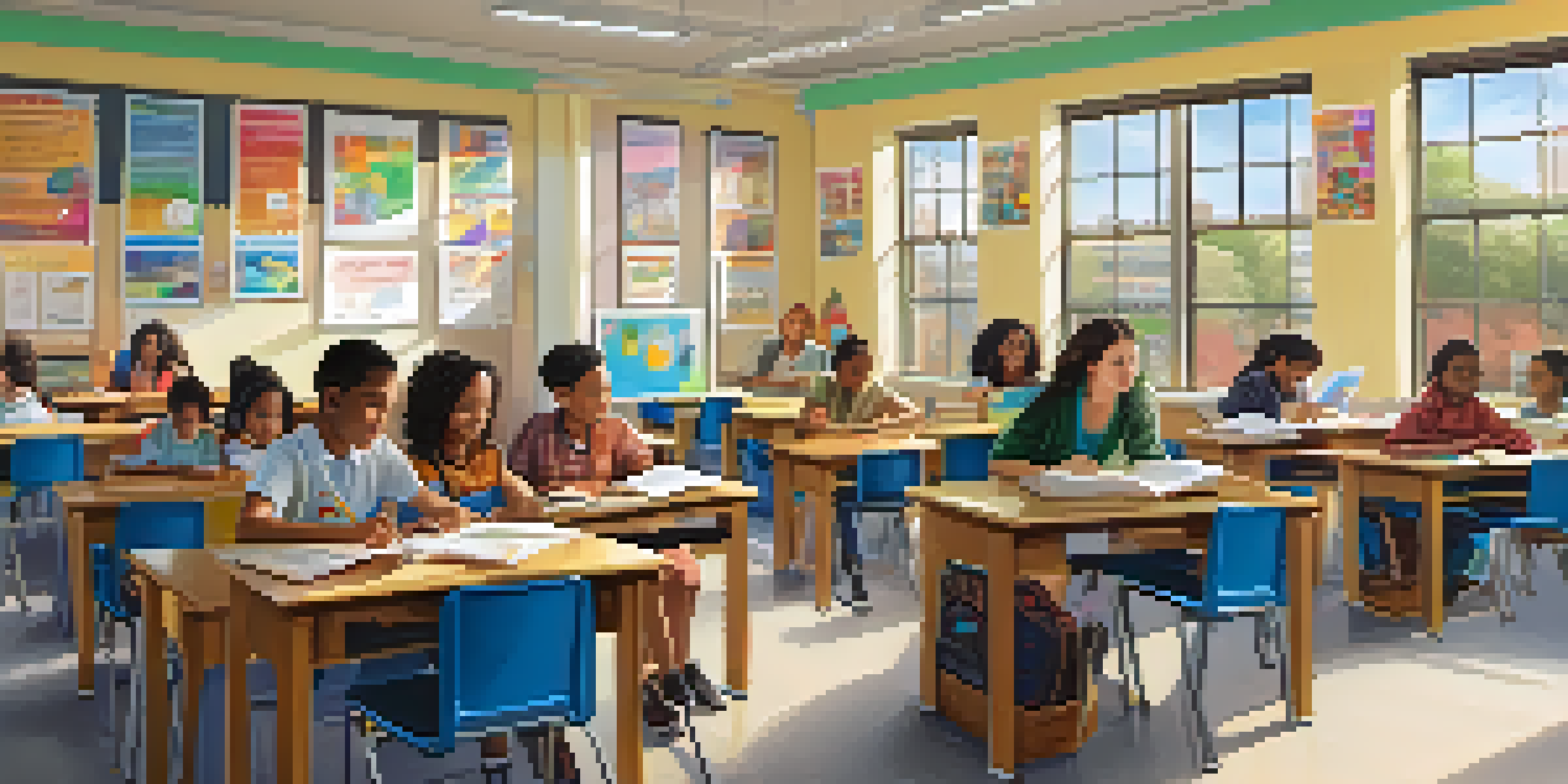Creating Assessment Strategies for Learning Experience Design

Understanding Assessment in Learning Experience Design
Assessment is a vital component in learning experience design, as it helps gauge the effectiveness of instructional methods. It's not just about testing knowledge; it's about understanding how learners interact with the material. Assessments can take various forms, including quizzes, projects, and peer evaluations, each serving a unique purpose in the learning journey.
Assessment should be viewed as a tool for learning rather than a means for judging learners.
To create impactful assessments, it’s essential to align them with learning objectives. This alignment ensures that what you assess reflects the skills and knowledge learners are expected to acquire. For instance, if a course focuses on critical thinking, assessments should challenge learners to analyze and evaluate information, rather than just recall facts.
Finally, incorporating feedback mechanisms into assessments can enhance learning outcomes. Providing timely and constructive feedback helps learners understand their strengths and areas for improvement, fostering a growth mindset and encouraging continuous learning.
Defining Clear Learning Objectives for Assessments
Clear learning objectives serve as a roadmap for both learners and educators. These objectives outline what students should know or be able to do by the end of a course or module. For example, instead of a vague objective like 'understanding marketing,' a clearer objective would be 'analyzing marketing strategies to determine their effectiveness.'

When learning objectives are specific, assessments can be crafted to measure those desired outcomes directly. This specificity allows educators to design assessments that accurately reflect student performance and mastery of the material. It creates a focused learning environment where both students and teachers know what success looks like.
Importance of Clear Learning Objectives
Clear learning objectives guide both educators and students, ensuring assessments accurately reflect desired outcomes.
Moreover, involving learners in the creation of learning objectives can increase their investment in the learning process. When students understand the goals and have a say in their learning journey, they are more likely to engage deeply and take ownership of their education.
Incorporating Diverse Assessment Methods
Diversity in assessment methods caters to different learning styles, ensuring that all students have the opportunity to showcase their knowledge. While traditional tests can be effective, incorporating projects, presentations, and collaborative assignments can provide a more comprehensive view of learner capabilities. For instance, a group project can demonstrate teamwork and problem-solving skills that a standard test may overlook.
The role of assessment is to help learners understand their progress and to guide educators in improving their teaching methods.
Additionally, formative assessments, which are conducted throughout the learning process, can be just as valuable as summative assessments, which occur at the end. Formative assessments, like quizzes or discussions, offer ongoing insights into learner progress and understanding, allowing educators to adjust their teaching strategies as needed. This flexibility can lead to improved learning outcomes.
Lastly, including self-assessments encourages learners to reflect on their own understanding and learning processes. By evaluating their performance, students become more aware of their strengths and weaknesses, fostering a deeper connection to their learning journey.
Designing Assessments for Real-World Applications
When assessments mirror real-world scenarios, they become more relevant and engaging for learners. Authentic assessments, like case studies or role-playing exercises, allow students to apply their knowledge in practical situations. For example, instead of a theoretical exam on project management, a task involving planning an actual project can provide invaluable experience.
This approach not only enhances engagement but also equips learners with skills that are directly applicable in their careers. When students see the connection between their studies and their future professions, they are more motivated to invest in their learning. It transforms education from a theoretical exercise into a meaningful experience.
Diverse Assessment Methods Enhance Learning
Incorporating various assessment methods accommodates different learning styles, providing a comprehensive view of student capabilities.
Moreover, real-world assessments can foster collaboration and communication skills, which are essential in today’s workplaces. By working on projects that require teamwork, learners develop interpersonal skills that will serve them well in their professional lives.
Utilizing Technology in Assessment Strategies
Incorporating technology into assessment strategies can enhance the learning experience and streamline the evaluation process. Tools like online quizzes, virtual simulations, and learning management systems provide immediate feedback and data analytics. For instance, an online quiz can instantly show learners their scores and areas needing improvement, allowing for timely intervention.
Technology also enables innovative assessment formats, such as gamified learning experiences or interactive e-portfolios. These formats can make assessments more engaging and enjoyable, motivating students to participate actively. Imagine a student assessing their knowledge through a game-like environment, where earning points is linked to mastering content—the fun factor can significantly boost engagement.
Additionally, the use of technology facilitates personalized learning paths. Educators can tailor assessments based on individual student needs, ensuring that each learner is challenged appropriately. This adaptability can lead to better learning outcomes and increased learner satisfaction.
Feedback: The Key to Effective Assessment
Feedback is a crucial element of the assessment process, serving as a bridge between performance and improvement. Timely and constructive feedback helps learners understand their mistakes and learn from them. For example, if a student receives feedback on a writing assignment that highlights both strengths and areas for growth, they’re more likely to improve in future tasks.
Moreover, feedback should be specific and actionable to be truly effective. Instead of saying 'good job,' a comment like 'your thesis is strong, but you need more supporting evidence' provides clear guidance on how to enhance performance. Such specificity empowers learners to take concrete steps toward improvement.
Feedback Fuels Continuous Improvement
Timely and specific feedback not only helps learners improve but also fosters a collaborative learning environment.
Incorporating peer feedback also fosters a collaborative learning environment. When students review each other's work, they gain different perspectives and insights. This process not only enhances critical thinking skills but also builds a sense of community among learners.
Evaluating and Revising Assessment Strategies
Assessment strategies should not be static; they need to evolve based on learner needs and educational trends. Regular evaluation of assessments allows educators to identify what works and what doesn’t. For example, if students consistently struggle with a particular assessment format, it may be time to consider alternative methods.
Gathering feedback from learners about their assessment experiences can provide invaluable insights. Surveys or informal discussions can reveal how students perceive the effectiveness and fairness of assessments, guiding necessary adjustments. This feedback loop creates a culture of continuous improvement in the learning environment.

Lastly, staying updated with the latest educational research and technology can inspire innovative assessment practices. By embracing new ideas and approaches, educators can ensure that their assessment strategies remain relevant and effective, ultimately enhancing the overall learning experience.